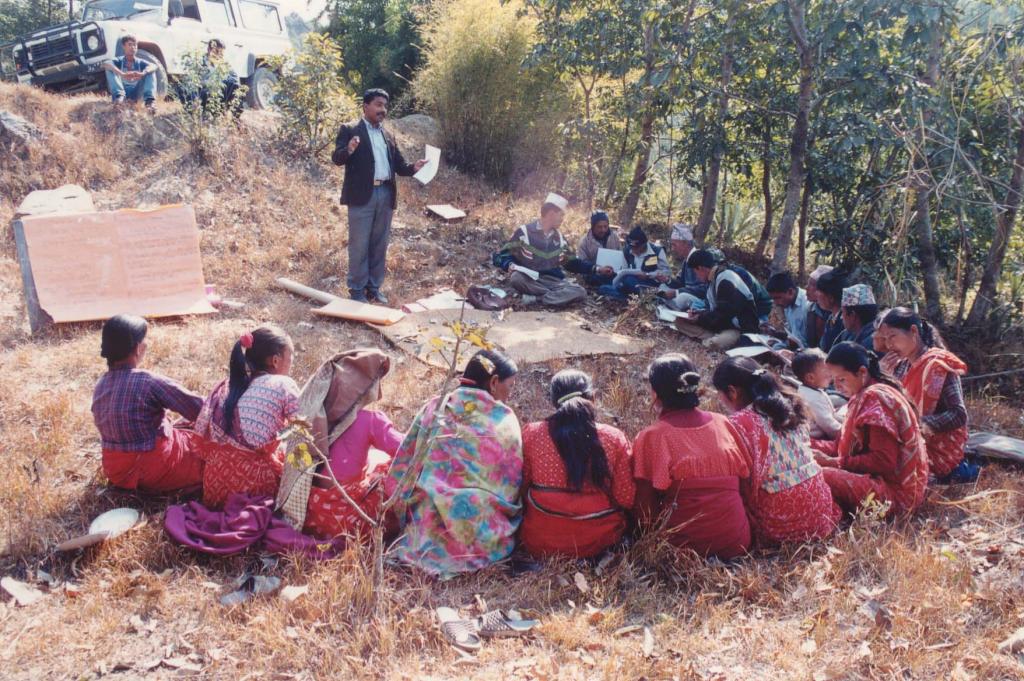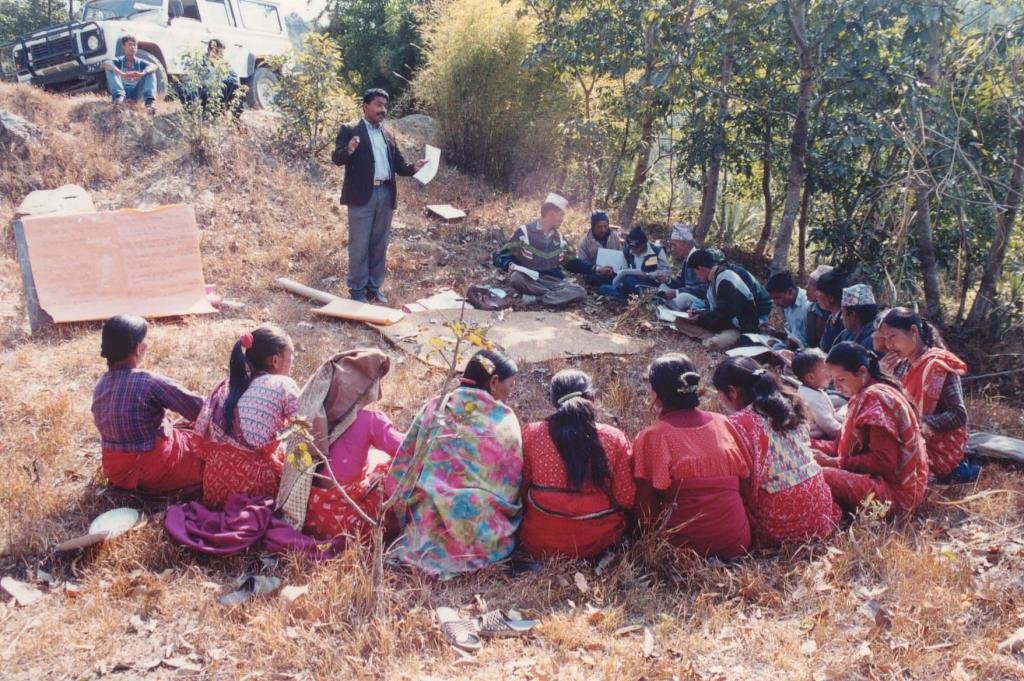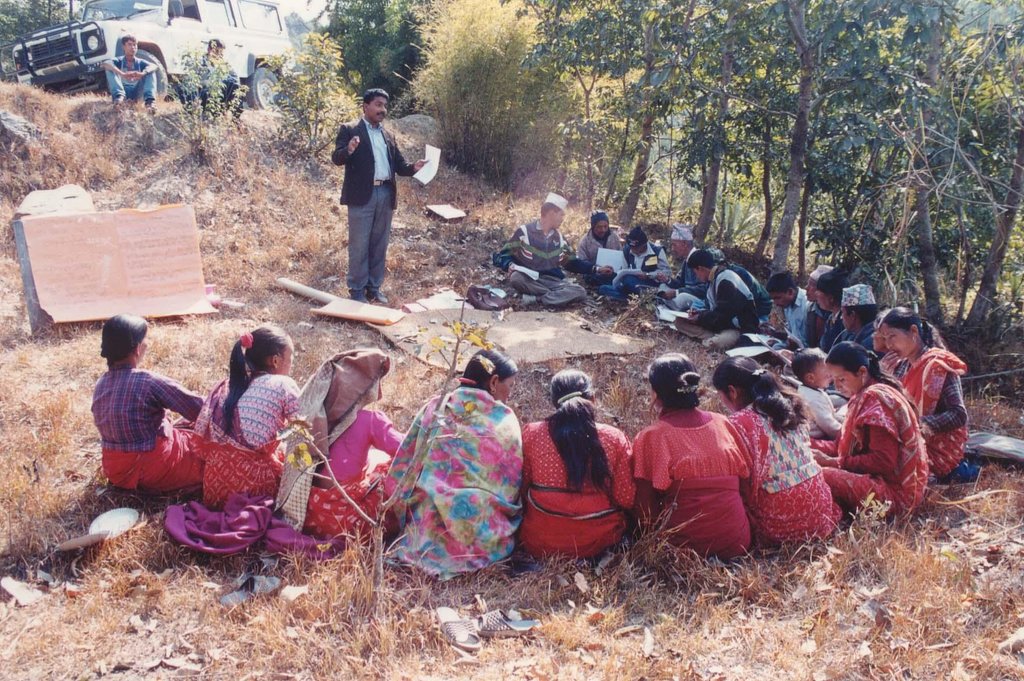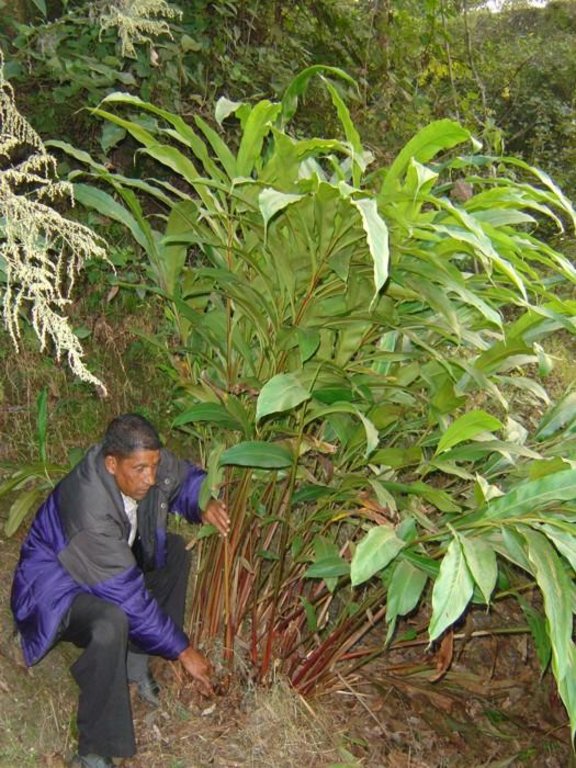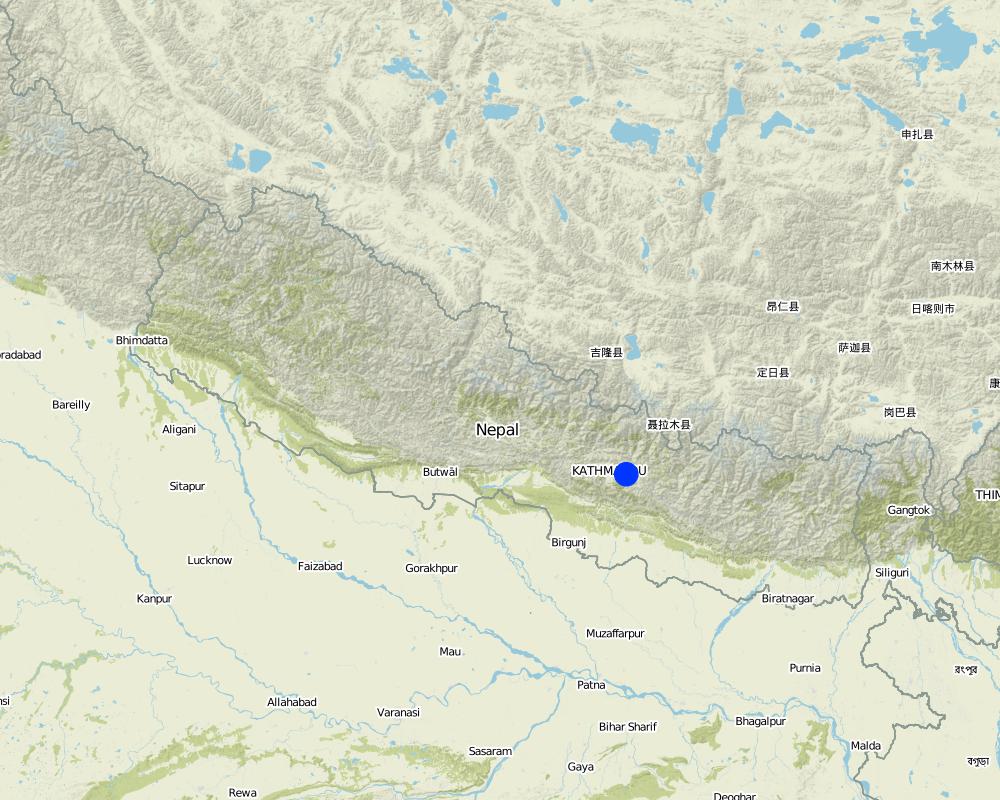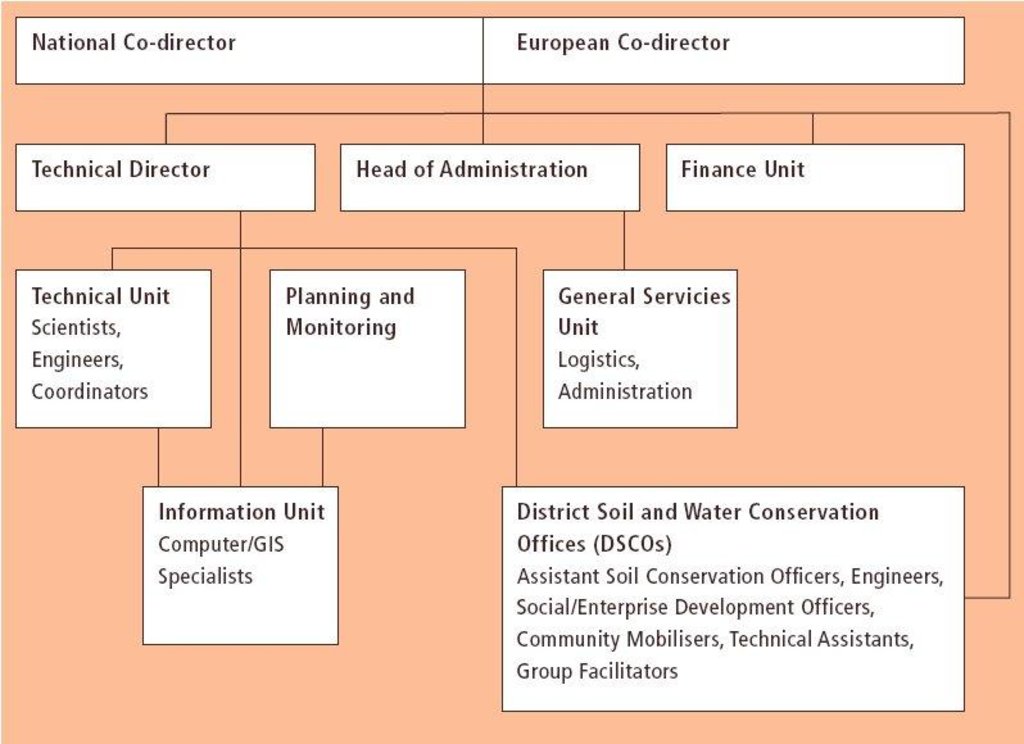Integrated watershed management for landslip and stream bank stabilisation [النيبال]
- تاريخ الإنشاء:
- تحديث:
- جامع المعلومات: Dileep Kumar Karna
- المحرر: –
- المراجعون: Fabian Ottiger, Deborah Niggli
Pahiro ra nadikinar katan roktham ka lagi ekikrit jaladhar byabasthapan (Nepali)
approaches_2354 - النيبال
عرض الأقسام
توسيع الكل طي الكل1. معلومات عامة
1.2 تفاصيل الاتصال بالأشخاص الرئيسيين لمصدر المعلومات والمؤسسات المعنية بتقييم وتوثيق النهج
متخصص في الإدارة المستدامة للأراضي:
متخصص في الإدارة المستدامة للأراضي:
متخصص في الإدارة المستدامة للأراضي:
اسم المشروع الذي سهّل توثيق/تقييم النهج (إذا كان ذلك على صلة)
Book project: where the land is greener - Case Studies and Analysis of Soil and Water Conservation Initiatives Worldwide (where the land is greener)اسم المؤسسة (المؤسسات) التي سهلت توثيق/تقييم النهج (إذا كان ذلك على صلة)
G.B. Pant Institute of Himalayan Einvironment & Development (G.B. Pant Institute of Himalayan Einvironment & Development) - الهنداسم المؤسسة (المؤسسات) التي سهلت توثيق/تقييم النهج (إذا كان ذلك على صلة)
ICIMOD International Centre for Integrated Mountain Development (ICIMOD) - النيبالاسم المؤسسة (المؤسسات) التي سهلت توثيق/تقييم النهج (إذا كان ذلك على صلة)
CDE Centre for Development and Environment (CDE Centre for Development and Environment) - سويسرا1.3 الشروط المتعلقة باستخدام البيانات الموثقة من خلال WOCAT
يوافق جامع المعلومات والشخص (لاشخاص) الرئيسي لمصدر المعلومات على الشروط المتعلقة باستخدام البيانات الموثقة من خلال WOCAT:
نعم
1.4 المراجع الخاصة باستبيان(استبيانات) تقنيات الإدارة المستدامة للأراضي

Landslip and stream bank stabilisation [النيبال]
Integration of vegetative and structural measures for landslip, stream bank and gully stabilisation on hillsides.
- جامع المعلومات: Dileep Kumar Karna
2. وصف نهج الإدارة المستدامة للأراضي
2.1 وصف موجز للنهج
Integrated watershed management as an example for landslip and stream bank stabilisation based on fostering a partnership between community institutions, line agencies, district authorities and consultants
2.2 وصف تفصيلي للنهج
وصف تفصيلي للنهج:
Aims / objectives: The sustainable management of mountain watersheds is a huge challenge for watershed management programmes due to the lack of collaboration between the various institutions involved. Building of synergies between these institutions is crucial for improved management. The Bagmati Integrated Watershed Management Programme (BIWMP) started in 1986, initiated, coordinated, and organised by the Department of Soil Conservation and Watershed Management with support from the European Commission. The programme aimed to help overcome natural resource degradation and thereby raise the standard of living of the rural population. The main causes of degradation and options to address the related problems were identified through participatory action research. Landslip and stream bank stabilisation was identified as one of the most promising and needed options to conserve soil and water, whilst providing direct livelihood benefits to local people, for example planting of large cardamom, later used as a cash crop, and reestablishment of damaged agricultural terrace above the landslip. The approach was to foster partnership between and among communities, district authorities, line agencies, and consultants. Key priorities were to ensure the equitable involvement of women and socially disadvantaged people and to promote local ownership, institutional capacity building, and sustainability.
Methods: The programme used participatory extension methods such as farmer-to-farmer exchange, training workshops, and onsite demonstrations, with participatory approaches to planning, implementing, and monitoring. The activities were based on villager’s priorities and were implemented by individual households, farmer groups, and village institutions. The local village development committee, local NGOs, community forest user group, and individual households worked together on landslip and stream bank stabilisation. Involving a range of stakeholders was paramount for success.
Stages of implementation: The first phase began in 1986 and focused on developing technical packages which were implemented through user groups. The second phase focused on improvements to implementation procedures, especially community organisation, extension, and income generation activities. The capacity of community groups was developed by establishing communication facilities, building up community networks, and empowering women and disadvantaged groups. BIWMP ended in 2003 with much of its success attributed to the close involvement of all the main stakeholders, and especially the local people, in all the activities. It successfully helped land users to adopt improved livelihood options.
2.3 صور عن النهج
2.5 البلد/المنطقة/المواقع التي تم تطبيق النهج فيها
البلد:
النيبال
المنطقة/الولاية/المحافظة:
Bagmati Watershed
Map
×2.6 تواريخ بدء وإنهاء تنفيذ النهج
أشر إلى سنة البدء:
1992
سنة الإنهاء (إذا لم يعد النهج مطبقًا):
2003
2.7 نوع النهج
- قائم على مشروع/برنامج
2.8 الغايات/الأهداف الرئيسية للنهج
The Approach focused mainly on SLM with other activities (poverty reduction through sustained income generation, infrastructure improvement through equitable involvement of women and the socially disadvantaged.)
To overcome the constraints to effectively implementing a watershed management programme by building synergies between diverse stakeholder institutions. In the case of landslip and stream bank stabilisation work, the specific objective was to come up with a technology that conserved soil and water whilst also providing direct livelihood benefits to local people.
The SLM Approach addressed the following problems: Lack of institutional capacity and collaboration for managing watershed resources
2.9 الظروف التي تمكن أو تعيق تنفيذ التقنية/التقنيات المطبقة بموجب النهج
المعايير والقيم الاجتماعية /الثقافية/ الدينية
- معيق
Following conventional top-down approaches.
Treatment through the SLM Approach: Introduction of improved methods with more participation/ involvement of land users.
الإطار المؤسساتي
- معيق
Lack of inter-institutional collaboration.
Treatment through the SLM Approach: Building and ensuring collaboration.
الإطار القانوني (حيازة الأراضي، وحقوق استخدام الأراضي والمياه)
- تمكين/تمكيني
The existing land ownership, land use rights / water rights greatly helped the approach implementation: The fact that the land was communal land (state property, use right with community) greatly helped smooth implementation of the approach as it was not necessary to deal with different land users.
المعرفة حول الإدارة المستدامة للأراضي، والوصول إلى الدعم الفني
- معيق
Lack of new options.
Treatment through the SLM Approach: Training about new technologies.
3. المشاركة وأدوار الأطراف المعنية
3.1 أصحاب المصلحة المعنيون بالنهج وأدوارهم
- مستخدمو الأراضي المحليون/المجتمعات المحلية
Men and women worked equally. existing groups of land users; men and women worked equally. BIWMP took a bottom-up approach to planning and implementation and encouraged the equitable involvement of women in its activities. The decisions about implementing the landslip and stream bank stabilisation technology were taken jointly by men and women
- متخصصون في الإدارة المستدامة للأراضي / مستشارون زراعيون
- المعلمون / أطفال المدارس / الطلاب
- الحكومة الوطنية (المخططون، صانعو القرار)
- منظمة دولية
إذا كان هناك العديد من الأطراف المعنية، قم بالإشارة إلى الوكالة الرائدة:
For the landslip and stream bank stabilisation technology, the approach was mainly designed by programme staff of the Kathmandu District Soil Conservation Office.
3.2 انخراط مستخدمي الأراضي المحليين/المجتمعات المحلية في المراحل المختلفة للنهج
| انخراط مستخدمي الأراضي المحليين/المجتمعات المحلية | حدد من شارك وصف الأنشطة | |
|---|---|---|
| المبادرة/التحفيز | تفاعلي | rapid/participatory rural appraisal |
| التخطيط | تفاعلي | rapid/participatory rural appraisal; Share information from users right from planning period. |
| التنفيذ | تفاعلي | responsible for major steps; Users were agreed to conserve soil by using SLM approaches. |
| الرصد/التقييم | تفاعلي | Mainly: reporting, public meetings, measurements/observations; partly: workshop/seminars; Regular monitoring and evaluation were successfully conducted by DSCO Office for the backstopping of the activities. |
| Research | تفاعلي | on-farm; This site is used as a Farmers School for extension of the technology on National and International level. |
3.3 مخطط التدفق (إذا كان متاحًا)
الوصف:
Organogram of the Bagmati Integrated Watershed Management Programme (BIWMP). The landslip and stream bank stabilisation work was implemented by the Kathmandu District Soil Conservation Office supervi
3.4 اتخاذ القرار بشأن اختيار تقنية/تقنيات الإدارة المستدامة للأراضي
حدد من الذي قرر اختيار التقنية/التقنيات التي سيتم تنفيذها:
- متخصصون في الإدارة المستدامة للأراضي بشكل أساسي، بعد التشاور مع مستخدمي الأراضي
اشرح:
The land users did not know about the technologies
Decisions on the method of implementing the SLM Technology were made by mainly by SLM specialists with consultation of land users. As measures required technical know-how
4. الدعم الفني وبناء القدرات وإدارة المعرفة
4.1 بناء القدرات/التدريب
هل تم تقديم التدريب لمستخدمي الأراضي / الأطراف المعنيين الآخرين؟:
نعم
حدد من تم تدريبه:
- مستخدمو الأراضي
شكل التدريب:
- من مزارع إلى مزارع
- مناطق العرض
- اجتماعات عامة
المواضيع المغطاة:
On soil and water conservation
4.2 خدمة استشارية
هل يملك مستخدمو الأراضي وصولا إلى خدمة استشارية؟:
نعم
حدد ما إذا كانت الخدمة الاستشارية متوفرة:
- في حقول مستخدمي الأراضي
وصف/تعليقات:
Name of method used for advisory service: Integrated Watershed Management Programme; Key elements: Participatory Rural Appraisal, Trainings, Farmer to farmer exchange, workshops, seminars, On site Demnostration; 1) Advisory service was carried out through: government's existing extension system; Extension staff: mainly government employees 2) Target groups for extension: land users; Activities: Planning,Training, Awareness about SLM approaches
Advisory service is quite adequate to ensure the continuation of land conservation activities; An extension workers is able to cover the areas where activities are implemented in small scale (i.e. subwatreshed or Micro subwatershed level programme).
4.3 تعزيز المؤسسات (التطوير التنظيمي)
هل تم إنشاء أو تعزيز مؤسسات من خلال هذا النهج؟:
- نعم، إلى حد كبير
حدد المستوى (المستويات) التي تم فيها تعزيز أو إنشاء المؤسسات:
- محلي
حدد نوع الدعم:
- بناء القدرات/التدريب
- معدات
4.4 الرصد والتقييم
هل يشكل الرصد والتقييم جزءا من النهج؟:
نعم
التعليقات:
bio-physical aspects were ad hoc monitored through measurements
technical aspects were regular monitored through observations
socio-cultural aspects were regular monitored through observations
economic / production aspects were regular monitored through observations
area treated aspects were ad hoc monitored through measurements
no. of land users involved aspects were regular monitored through observations
management of Approach aspects were regular monitored through observations
There were many changes in the Approach as a result of monitoring and evaluation: The approach described was designed on the basis of the results shown through monitoring and evaluating the first phase of BIWMP (1986-1992). In the second phase from 1992, more attention was focused on building up the capacity of community groups to plan, implement, and continue development activities. Capacity was built through (1) community-level training; (2) supporting the installation of com
4.5 البحوث
هل كانت البحوث جزءًا من النهج؟:
نعم
حدد المواضيع:
- علم الاجتماع
- الاقتصاد / التسويق
- علم الايكولوجيا
- تكنولوجيا
أعط تفاصيل إضافية وأشر إلى من قام بالبحوث:
see also further reading
5. التمويل والدعم المادي الخارجي
5.1 الميزانية السنوية لمكون الإدارة المستدامة للأراضي في النهج المذكور
إذا لم تكن الميزانية السنوية الدقيقة معروفة، قم بالإشارة إلى نطاقها:
- > 1,000,000
التعليقات (على سبيل المثال المصادر الرئيسية للتمويل/الجهات المانحة الرئيسية):
Approach costs were met by the following donors: international (European Commission): 81.0%; government (national - His Majesty's Government (Nepal)): 4.0%; local community / land user(s) (Bagmati watershed): 15.0%
5.2 الدعم المالي/المادي المقدم لمستخدمي الأراضي
هل حصل مستخدمو الأراضي على دعم مالي/ مادي لتنفيذ التقنية/ التقنيات؟:
نعم
5.3 إعانات لمدخلات محددة (بما في ذلك العمالة)
- زراعة
| حدد المدخلات التي تم دعمها | إلى أي مدى | حدد الإعانات |
|---|---|---|
| بذور | ||
| Seedlings and samples | ممول جزئيا | |
- بناء
| حدد المدخلات التي تم دعمها | إلى أي مدى | حدد الإعانات |
|---|---|---|
| community infrastructure (cement, bricks, stones) | ممول بالكامل | |
إذا كان العمل من قبل مستخدمي الأراضي مدخلاً جوهريًا، فهل كان:
- تطوعي
التعليقات:
About 75% of the labour for the landslip and stream bank stabilisation work was voluntar. The remainder was paid
5.4 الائتمان
هل تم توفير ائتمان في إطار نهج أنشطة الإدارة المستدامة للأراضي؟:
كلا
6. تحليل الأثر والتصريحات الختامية
6.1 آثار النهج
هل ساعد النهج مستخدمي الأراضي على تنفيذ وصيانة تقنيات الإدارة المستدامة للأراضي؟:
- لا
- نعم، قليلا
- نعم، باعتدال
- نعم، إلى حد كبير
The approach helped to improve soil and water management by promoting many activities related to agroforestry, water harvesting, landslip stabilisation, and community forestry. Many local land users adopted these technologies.
هل أدى النهج إلى تحسن في مسائل حيازة الأراضي / حقوق المستخدمين التي أعاقت تنفيذ تقنيات الإدارة المستدامة للأراضي؟:
- لا
- نعم، قليلا
- نعم، باعتدال
- نعم، إلى حد كبير
By influencing the forest department ot allocate forest to the people as community forest.
Did other land users / projects adopt the Approach?
- لا
- نعم، قليلا
- نعم، باعتدال
- نعم، إلى حد كبير
It is not known whether this approach has been taken to address landslip and stream bank erosion problems in other areas by other projects.
6.3 استدامة أنشطة النهج
هل يمكن لمستخدمي الأراضي المحافظة على استدامة ما تم تنفيذه من خلال النهج (بدون دعم خارجي)؟:
- غير مؤكد
إذا كان الجواب لا أو غير متأكد، حدد ذلك وعلق عليه:
The land users were keen on maintaining the implemented technologies due to the benefits they could get from it. There has to be a strong driving force within the land users and the community to continue this approach.
6.4 نقاط قوة/مزايا النهج
| نقاط القوة/ المزايا/ الفرص من وجهة نظر مستخدمي الأراضي |
|---|
| Helped land users improve their livelihoods. (How to sustain/ enhance this strength: Similar approaches should be implemented by government and community programmes.) |
| نقاط القوة/ المزايا/ الفرص من وجهة نظر جامع المعلومات أو غيره من الاشخاص الرئيسيين لمصدر المعلومات |
|---|
| Involves all key actors in watershed management. (How to sustain/ enhance this strength: Institutionalise the approach.) |
| The approach encourages land users communities and local institutions to get involved in planning and decision making (How to sustain/ enhance this strength: Involve them more in planning and decision making) |
| The implementation of technologies through this approach is cost-effective and socio-culturally acceptable. (How to sustain/ enhance this strength: Take into account local resources and knowledge) |
6.5 نقاط الضعف/ العيوب في المنهج وطرق التغلب عليها
| نقاط الضعف/ المساوىء/ المخاطر من وجهة نظر مستخدم الأراضي | كيف يمكن التغلب عليها؟ |
|---|---|
| No opinion. |
| نقاط الضعف/ المساوىء/ المخاطر من وجهة نظر جامع المعلومات أو غيره من الاشخاص الرئيسيين لمصدر المعلومات | كيف يمكن التغلب عليها؟ |
|---|---|
| Some activities with high input requirements may not be spontaneously adopted by poor land users | Further research on how to reduce inputs or provide specifi c incentives for such disadvantaged groups. |
| The approach is 'project focussed' | Institutionalise the approach |
| The approach does not focus on landless families. | Implement watershed management activities that involve and benefit landless people |
7. المراجع والروابط
7.1 طرق جمع/مصادر المعلومات
- زيارات ميدانية، مسوحات ميدانية
- مقابلات مع مستخدمي الأراضي
7.2 المراجع للمنشورات المتاحة
العنوان، المؤلف، السنة، النظام القياسي الدولي لترقيم الكتب ISBN:
Mallik, D.B. (2000) 'Working with Community'. In Jaladhar-QuarterlyBIWM (1998 to 2001) Annual Workplans for Project Years 1998 to 2002, prepared for Government of Nepal,MOFS,DSCWM and EU; Kathmandu, Nepal
متاح من أين؟كم التكلفة؟:
BIWMPBIWMP email: biwmp@mos.com.np
العنوان، المؤلف، السنة، النظام القياسي الدولي لترقيم الكتب ISBN:
BIWM (1998 to 2001) Annual Workplans for Project Years 1998 to 2002, prepared for Government of Nepal,MOFS,DSCWM and EU; Kathmandu, Nepal
متاح من أين؟كم التكلفة؟:
BIWMP email: biwmp@mos.com.np
الروابط والوحدات المواضيعية
توسيع الكل طي الكلالروابط

Landslip and stream bank stabilisation [النيبال]
Integration of vegetative and structural measures for landslip, stream bank and gully stabilisation on hillsides.
- جامع المعلومات: Dileep Kumar Karna
الوحدات المواضيعية
لا يوجد وحدات مواضيعية


